All that can be seen of Plymouth, Montserrat, is a scattering of roofs and the top floors of the tallest buildings, just poking out from a barren landscape of ash and boulders.
The rest of the town is buried: a modern Pompeii slowly being reclaimed by the mountain.
Away from the centre, vegetation has grown over homes and buildings which escaped the pyroclastic flows. In the lobby of a luxury hotel outside town, dusty papers still sit on the reception desk. One of them is a form for hurricane insurance.
Standing amid the ash, Cecil Wade pointed to the Soufrière Hills volcano, still smoking in the distance.
“That is the devil, man,” he said, shaking his head. “That is Satan at work.”
The faint smell of sulfur hung in the air.
In 1995, a series of eruptions began that almost completely destroyed two-thirds of the tiny island, a British overseas territory in the eastern Caribbean some 30 miles from Antigua. Years of ash and boulders from the volcano have buried most of Plymouth, although the town is still officially the capital.

It’s still a grim sight, but 20 years after the first eruption, Montserratians are beginning to reconsider Soufrière Hills. The nation’s government, elected at the end of 2014, is now betting the country’s future, in part, on the very volcano that almost destroyed it. The eruption is the past, they argue; geothermal energy, sand mining and tourism are the future.
“We have learned to live with the volcano,” said the island’s premier, Donaldson Romeo. The “long, hopeless period” that began with the eruptions is over. “Ash to cash,” he said with a grin.
“Before the volcano, we were standing on our own two feet,” Romeo added. “Here we are 20 years later, with lots of money spent, but we don’t have the programs that will assist us in achieving [self-sufficiency].”
The majority of Montserrat’s annual budget comes from the United Kingdom: since the crisis, British taxpayers have invested more than £400m in aid to the island. A new airport and housing for displaced residents are among the improvements made possible through those funds.
But “ash to cash” has been slow to materialize. Talk of geothermal development, like many projects on the island, has been going on for more than a decade amid concerns, both in Montserrat and the UK, of local mismanagement of aid money.
Yet Romeo says the island is poised to finally spring forward with a refreshed relationship with London.
“British taxpayers’ money will now be spent in the way where the people of Montserrat will be developed, and the infrastructure will be developed,” he said. “We are actually in a place to fix several hundred years of history.”
The private sector on the island has already moved to cash in on what the volcano offers. Around 2010, sand mining began in the island’s exclusion zone – the area most at risk from volcanic activity where people are no longer allowed to live. During the day, the island’s main artery road is clogged with sand-loaded trucks en route to the port.
“It’s like a gold mine on Montserrat,” said Claude Hogan, Montserrat’s minister of agriculture, trade, housing, lands and environment.
“The sand mining operation is something that I think is good for the country,” Wade said while pulling over to let a truck pass on the road running along Plymouth’s ruins. “It needs to be controlled more by the government so that more people can benefit. But I think it’s something viable because we don’t export anything, we don’t grow anything, we don’t have factories that produce anything. We are fortunate that the volcano provides us with the sand that we can send to other countries, but I think it just needs to be controlled at a larger scale so that more people can benefit from it.”
Development of geothermal energy has moved more slowly; local residents recall officials discussing the idea decades ago. Two wells have been drilled since 2013 at a cost of £8.5m, paid for by the UK Department for International Development. The agency is planning to drill a third this year, and local officials expect that project to begin in March.
“The energy is vast,” said David Thomson, managing director of Montserrat’s utilities. “It’s there.”
The island currently runs on four high-speed diesel generators, and power outages are routine even though Montserratians pay higher electric rates – $0.50 per kilowatt-hour – than their neighbors in the region, who pay $0.33 on average.
“They’re not built for day to day service,” Thomson said. “Geothermal power is almost the opposite.” Montserrat’s government and the Department for International Development are aiming to take Montserrat’s grid to 100% renewable energy by 2020.
“This is really something that can revolutionize the economic status of Montserrat,” said Felix Persaud, a civil engineer helping lead the Montserratian government’s geothermal project.
Paul Lewis, Montserrat’s minister of communications, works, energy and labour, said a renewable grid would act “like a carrot” for investors looking to set up shop in a place that offers renewable energy at a lower cost. The country would also spend less money on fuel for generators, he said.
“We’ll have savings and going forward, we’ll create jobs by attracting investors,” Lewis said. “It’s a sales pitch also for tourists who want to support a green economy.”
Access to the island became more difficult after the eruptions. The new airport is small and can only handle six-seater planes. A private ferry service also operates from Antigua. The resulting isolation, compared to other tourist-saturated islands in the Caribbean, has allowed Montserrat to maintain a more pristine environment. Some worry that increased development will jeopardize that.
“When it comes to both geothermal and sand mining, it has to be done in a correct way, so it doesn’t cause the damage that it can cause,” said Sarita Francis, director of the Montserrat national trust.
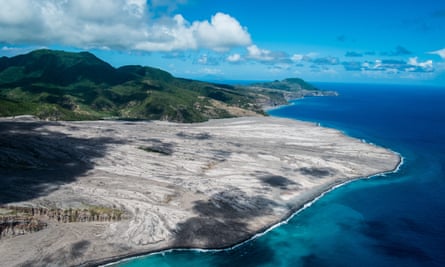
It’s that natural beauty that draws in Montserrat’s small but growing number of tourists. In 2015, a regional cruise line began making regular stops in Montserrat. Local drivers and tour operators congregate at the island’s tiny port each Tuesday, looking to cash in on tourists who want to see the volcano.
In 2015, licensed drivers like Wade secured permission to take visitors to see the ruins of Plymouth, which many locals hope will draw more tourists who come to ogle at the “Caribbean Pompeii”.
“Montserrat is a secret,” Francis said. “It’s one of the best kept secrets around. We have not spent a lot of time promoting Montserrat over the last 20 years or so. We do not want mass tourism, but we want for people [to be able] to visit.”


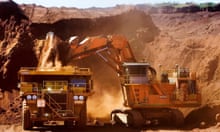
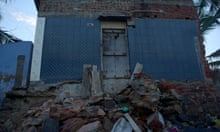
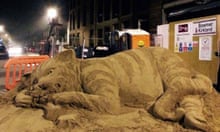

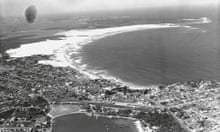

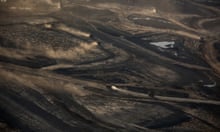
Comments (…)
Sign in or create your Guardian account to join the discussion